Where to Find Bamboo in Texas
Bamboo can grow in Texas, but it is not native to the state or North America more broadly. Typically, bamboo thrives in a warm climate with plenty of moisture and can adapt to a range of soils. Some bamboo species fit better with the Texas climate and soil conditions than others, so it is important to do some research to choose a bamboo species that will tolerate the environment in your part of Texas. Many people do grow bamboo in Texas, but since bamboo is not native to the area, you may benefit from the advice of a plant expert or horticulturalists who knows the local environment and can give you good counsel.
There are aspects of the Texas climate that make it a hospitable place for bamboo to grow. However, this makes it especially important that you have a plan in place so that your bamboo grove does not grow beyond your control. One way you can begin learning about this is to meet local experts and see how others grow bamboo. To do this, before planting a bamboo grove, try visiting a local botanical garden or nearby arboretum so you can learn more about what it looks like to responsibly and successfully grow bamboo in Texas.
This article will explore a few of the challenges and benefits of growing bamboo in the great state of Texas. From there, this article lists several botanical gardens and arboretums where you can see bamboo growing in Texas today. Let’s jump in, starting with the basic facts about bamboo plants.
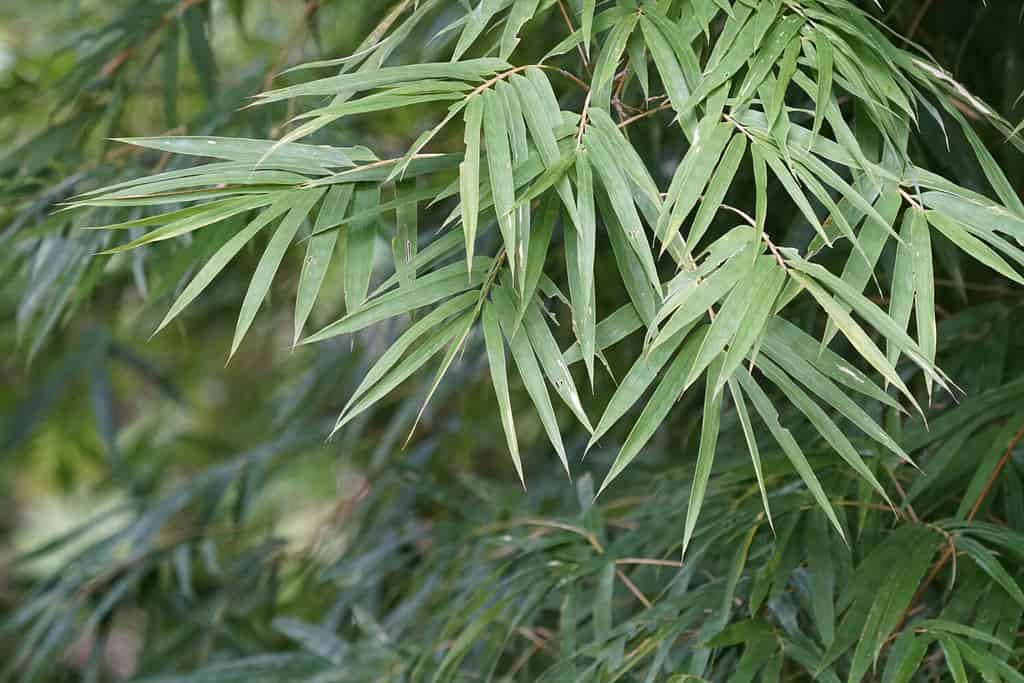
Originating in China, over history, bamboo eventually spread to other parts of Asia.
©Doikanoy/Shutterstock.com
Introducing the Plants Called “Bamboo”
Did you know that there are over 1,000, and potentially as many as 2,000, different species of plants known as “bamboo”? These members of the grass family Poaceae are grouped into more than 100 different genera. The majority of these plants are originally from Asia. However, many bamboo species thrive far beyond the Asian continent. Today, you can find bamboo growing all over the world, coming in a broad range of sizes, colors, textures, and growth patterns.
Origins
Originating in China, over history, bamboo eventually spread to other parts of Asia. In the 1700s and 1800s, bamboo came to the Western hemisphere and grew in popularity in countries like the United States as an ornamental plant. It eventually became valued for its practical use as a raw material for construction, furniture, and other household items. Though it is often found in garden landscapes, it also has culinary and medicinal benefits and can be a fantastic renewable resource and alternative to less-sustainable materials such as plastic. As a result, commercial cultivation of bamboo and the production of bamboo-based products continues to grow around the world. Thanks to this rise in popularity, you can now easily find a vast assortment of bamboo-based products in your local grocery or home goods store.
Since bamboo plants originally come from Asia, bamboo species are foreign to North American ecosystems, including those of Texas. This means that while planting bamboo can bring some benefits, it is important to be aware of the harm it can potentially cause to the local environment if not managed with care. However, when cultivated with intentionality, bamboo can be a fantastic addition to some home landscapes. Let’s go over some of the specific challenges and potential benefits of growing bamboo in Texas now.
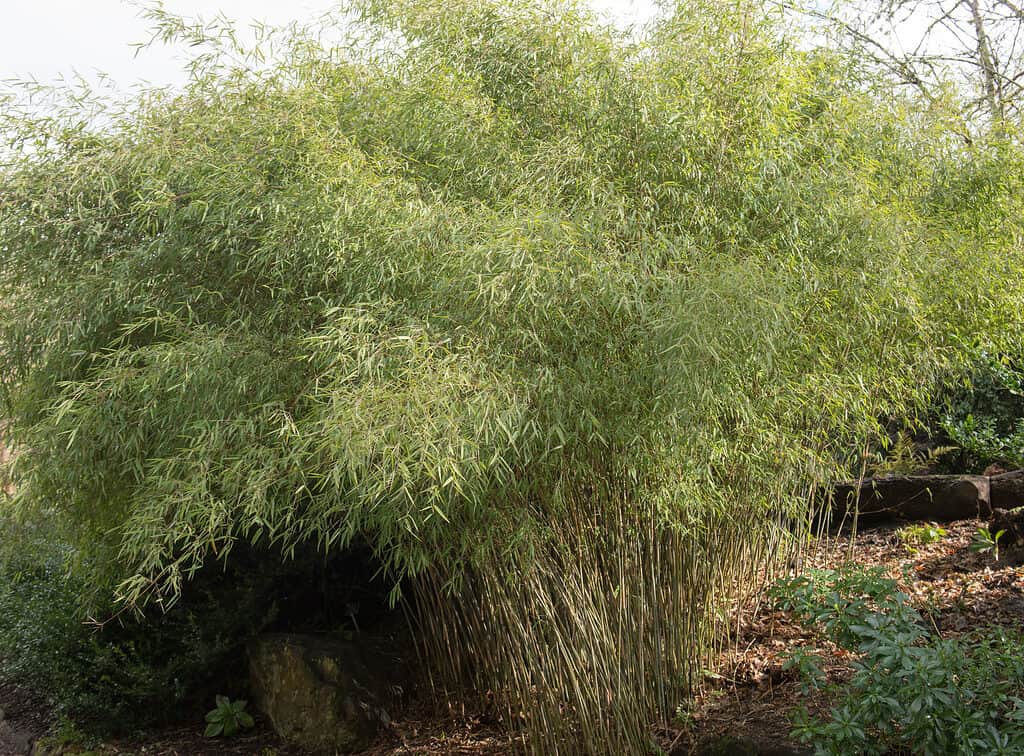
Since bamboo plants originally come from Asia, bamboo species are foreign to North American ecosystems, including those of Texas.
©Peter Turner Photography/Shutterstock.com
Challenges of Growing Bamboo in Texas
Bamboo tends to grow best in conditions with organically rich and well-draining soil, lots of sunlight, and consistent moisture. Some species can adapt well to less-ideal soils and climates, but others will struggle to thrive in conditions that are extremely different from their native environment. When growing bamboo in Texas, you may want to consider challenges posed by the local temperature, soil conditions, water availability, and prevalence of pests and diseases.
Considerations for Growing Bamboo in Texas
First, bamboo does grow well in warm climates. However, Texas often sees extremely hot, dry summers that move into cold winters. This temperature change can damage bamboo, which is native to more consistently-warm and moist climates in Asia. Some species will die due to the extreme change in temperature. To adjust to this reality in Texas, choose hardy bamboo plants that can survive drops in temperature.
Second, some bamboo species can grow in soils that range from sandy to loamy. However, the soil in Texas varies greatly depending on which part of the state you are in. The soil conditions range from very alkaline to very acidic. Before you plant bamboo, investigate the soil in your specific region and look into planting a bamboo species that will grow well in that particular type of soil.
Third, most bamboo plants need consistent, regular access to water throughout the entire year. Because Texas does have dry seasons and droughts, you may want to plan ways to maintain sufficient moisture levels for your bamboo plants.
Fourth, bamboo plants are vulnerable to certain pests and diseases. You will want to monitor your plants for fungal disease, insects, and signs of damage that could eventually kill your bamboo.
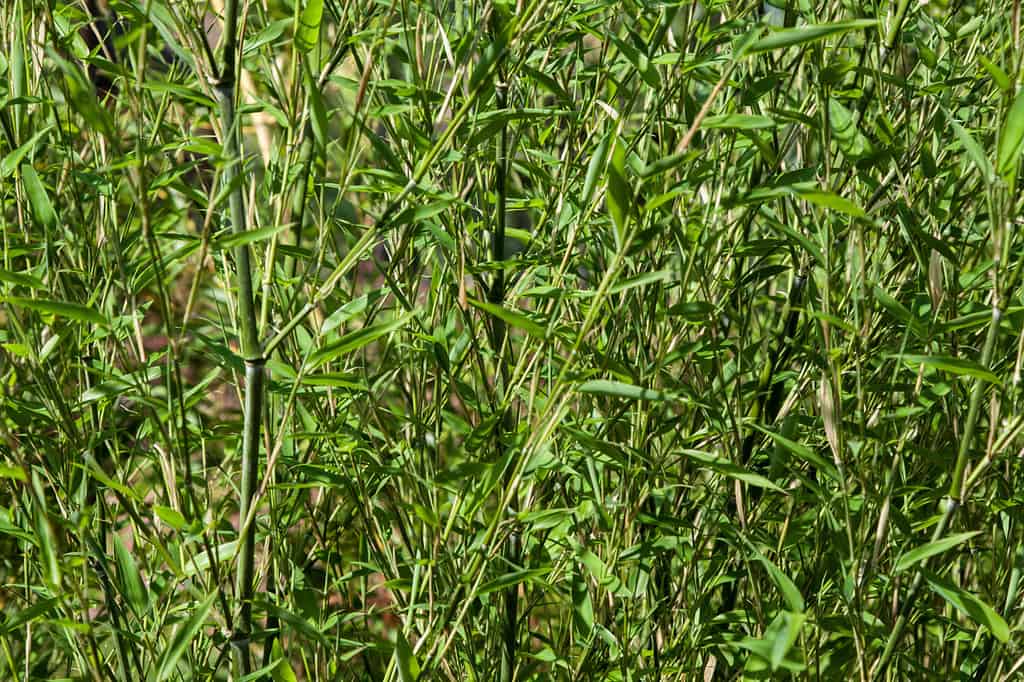
Because Texas does have dry seasons and droughts, you may want to plan ways to maintain sufficient moisture levels for your bamboo plants.
©Ketta/Shutterstock.com
How to Grow Bamboo in Texas
Keeping all of these factors top of mind, it is feasible to grow bamboo in Texas. Many people grow bamboo plants across the state. Despite some of the challenges you may face, following best practices for growing bamboo in Texas can help you to successfully cultivate a thriving bamboo grove. To support your success, it is also important to choose a bamboo species that can adapt well to the particular climate and soil conditions in Texas.
Some of the species that may grow well in Texas include Phyllostachys aurea, Bambusa multiplex, Fargesia nitida, Chusquea culeou, and Phyllostachys bissetii. Which one you choose will also depend on the intended purpose for planting the bamboo. Is it for ornamental purposes, or do you hope to harvest bamboo as a raw material for making various products? Keep in mind the qualities and uses you hope for to guide the bamboo species you select.
Keep in mind that bamboo can cause ecological problems when not managed appropriately. Because it grows rapidly and voraciously, some states consider bamboo to be an invasive species that threatens the native environment. Invasive bamboo species already cause damage to certain native Texas environments. If you choose the right species, growing bamboo is typically pretty easy and does not require a lot of special knowledge or skills.
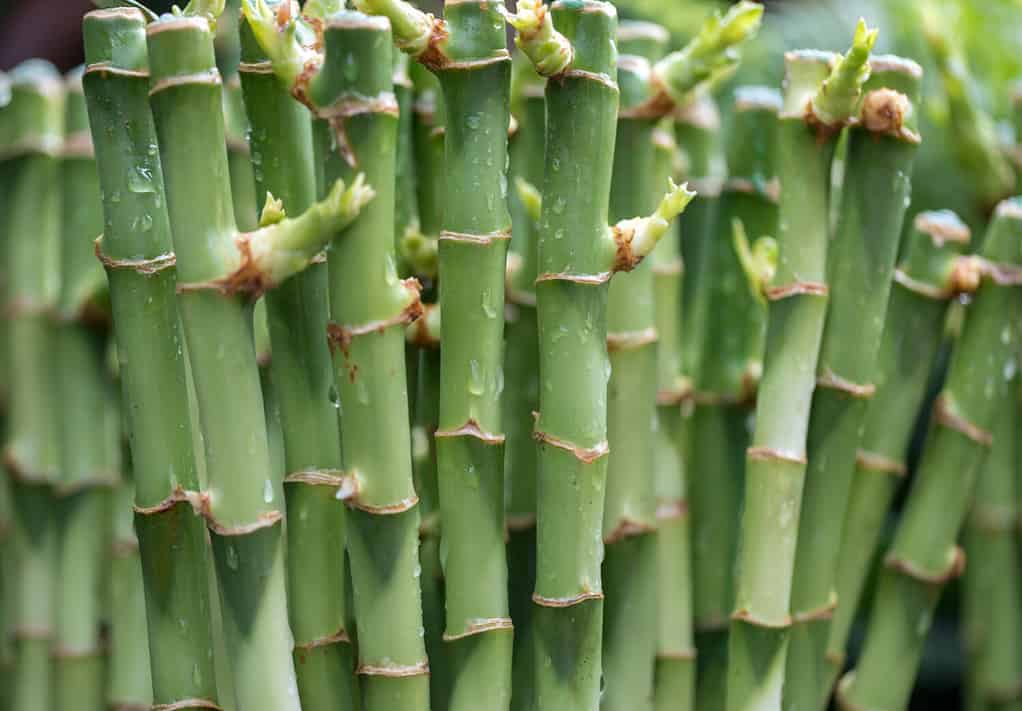
Keep in mind the qualities and uses you hope for to guide the bamboo species you select.
©wjarek/Shutterstock.com
Benefits of Growing Bamboo in Texas
Keeping in mind the considerations already listed, there can be several benefits that bamboo brings. In addition to its value as a beautiful, ornamental plant, bamboo can help prevent erosion, clean the air by converting carbon dioxide from the atmosphere, and attract animal wildlife. Many people use bamboo as an attractive wind or shade screen, to create a peaceful garden environment, or to harvest as a raw material.
Before you plant your bamboo forest in Texas, one way you can learn about the real-life challenges and benefits of planting bamboo is by visiting a local botanical garden or plant nursery. These are great places to meet horticulturists and plant experts who can provide valuable advice for you. These locations are often educational facilities for research and practical learning, so you may get access to workshops and training tips before you embark on your bamboo cultivation adventure. Let’s learn about some of the places in the state that you may be able to visit to see bamboo growing in Texas.
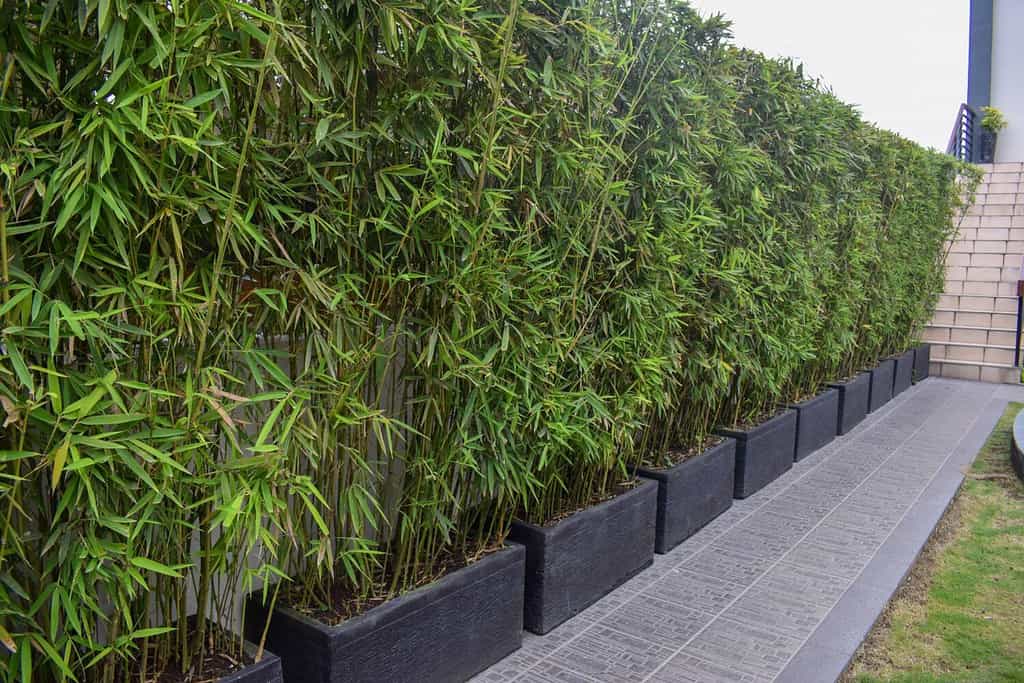
One way you can learn about the real-life challenges and benefits of planting bamboo is by visiting a local botanical garden or plant nursery.
©Bayu Rachmawati/Shutterstock.com
Bamboo Arboretums and Gardens in Texas
The employees of botanical gardens and arboretums often are passionate about plants and the natural world and may be able to share plenty of wisdom with you about growing bamboo. Several bamboo gardens in Texas are open to the public and give visitors the chance to explore different species of bamboo. The places listed below include places across Texas where you may be able to see bamboo in person or get tips on growing your bamboo grove. However, this is only a partial list! There are likely many more places where you can ask questions, engage in specific exhibits, and learn all about growing bamboo in Texas. Many places regularly add new gardens or open specialty exhibits, so start with this short list below and then do your research!
Also, keep in mind that these gardens and arboretums may change their hours with the season or based on current exhibits. Since so many of these locations provide education and ongoing community engagement opportunities, there may also be unique ways for you to connect with garden staff or horticulturalists. Look on these places’ websites to verify that the information below is still up-to-date. From there, enjoy your visits!
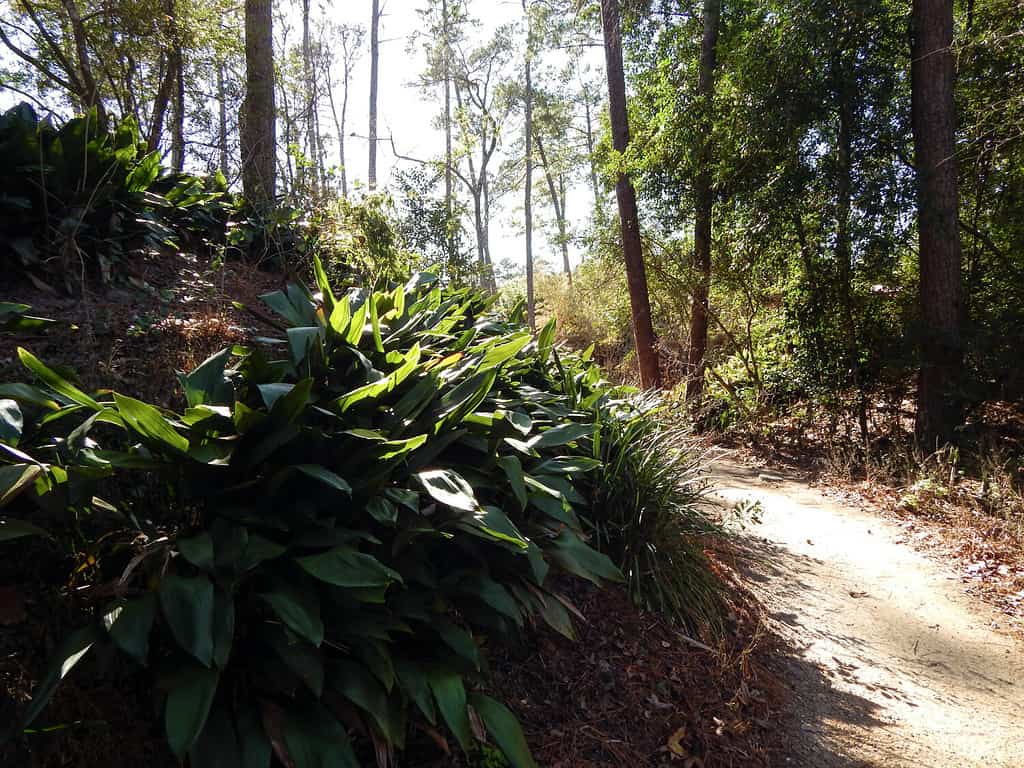
As a designated center for plant conservation research and demonstrations, the Mercer Botanic Gardens offers regular educational opportunities.
©Me Wise Magic 5150/Shutterstock.com
Bamboo Texas
Bamboo Texas in Hockley, just outside of northwest Houston, is a 6-acre plant nursery that offers tours of a large bamboo display garden, the opportunity to tour the nursery to select bamboo plants for yourself, pickup or delivery of many different bamboo species, and expert advice about rare and fine non-invasive bamboos that you can use for landscaping.
At Bamboo Texas, you can see multiple types of subtropical clumping bamboo. This nursery has a focus on the Bambusa textilis and Bambusa multiplex varieties. With over 20 years of experience growing and cultivating bamboo in Texas, Bamboo Texas has expertise in non-invasive clumping bamboo that suit the climates of South Texas and the Gulf Coast. Their varieties are cold-hardy and can grow well in many parts of Texas. The owners and employees of Bamboo Texas are committed to helping you have a successful bamboo experience and will provide custom advice based on your home’s climate conditions.
To visit Bamboo Texas, schedule an appointment to take a tour, learn about bamboo, and choose the right species for your needs. You may only visit by appointment, so email them or call the number on their website to schedule a visit.
Zilker Botanical Garden
Zilker Botanical Garden in Austin is a 28-acre garden contained within Zilker Metropolitan Park in downtown Austin. This gem in the heart of the city features themed gardens such as a rose garden, the Taniguchi Japanese Garden, and the Hartman Prehistoric Garden. The streams, live oaks, and koi ponds offer a tranquil atmosphere for rest and rejuvenation. Zilker Botanical Garden is a public-private partnership between the City of Austin Parks & Recreation Department and the Zilker Botanical Garden Conservancy. This partnership seeks to inspire and educate visitors about plants and the natural world.
The Zilker Botanical Garden includes a lush bamboo grove that includes several different species of bamboo in its serene garden environment. Additionally, the garden has been part of the annual Texas Bamboo Festival. Each year, the Texas Bamboo Festival brings together bamboo experts and enthusiasts to share experiences and tips, learn about different species, and join an auction of bamboo items.
Zilker Botanical Garden is open daily from 9 a.m. to 6 p.m. during the spring and summer and from 9 a.m. to 5 p.m. in the fall and winter. For Austin residents, tickets cost $6 for adults, $3 for children aged 3 to 17, and $5 for seniors. For those visiting from outside of Austin, admission costs $8 for adults, $4 for children aged 3 to 17, and $7 for seniors. There are also free days when no admission is charged throughout the year – check the website to learn more and plan your visit!
Mercer Arboretum and Botanic Gardens
The Mercer Arboretum and Botanic Gardens in Humble, located just north of Houston, is a 300-acre riparian parkland. This garden has outdoor collections of azaleas, camellias, cycads, gingers, palm trees, and Texas native plants, along with constantly-updated floral displays. As a designated center for plant conservation research and demonstrations, the garden offers regular educational opportunities. Mercer Arboretum and Botanic Gardens offer five miles of nature walk trails, cultivated gardens, and a bamboo grove with multiple species of bamboo. This nationally-recognized garden and arboretum also offer picnic grounds, native plants, and playgrounds for children.
Mercer Arboretum and Botanic Gardens are open daily from 8 a.m. to 5 p.m. Admission is free.
San Antonio Botanical Garden
San Antonio Botanical Garden is a nationally-recognized attraction that is a museum for plants, educational experience, research and conservation facility, and entertainment venue. Established in 1980, San Antonio Botanical Garden is 38 acres that are home to 35 endangered and rare species. The gardens are home to a vast collection of native Texas plants and other rare and unique species.
Within the garden is a Japanese garden designed by landscapers and craftspeople from Japan. The Japanese garden includes stone walkways, water features, lanterns, and bamboo fences.
San Antonio Botanical Garden is open daily from 8 a.m. to 7 p.m., with Wednesdays open until 9 p.m. During the week, adult tickets are $16, children aged 3 to 13 are $13, military service members are $14, and children under the age of 3 are free. On weekends, adult tickets are $18, children aged 3 to 13 are $15, military service members are $16, and children under the age of 3 are free.
Other Places to Find Bamboo in Texas
In addition to the botanical gardens, arboretums, and nurseries named above, you can also find bamboo thriving in many other parts of Texas. Many private homes and gardens feature large groves of bamboo as part of their landscaping design or as a central focus. You can learn about private estates to tour by searching online for garden tours and clubs that may arrange events or public visit opportunities to these private homes. There are also many other nurseries throughout the state that sell a variety of bamboo species.
Keep in mind that many states and cities have specific rules governing which plants can be cultivated or which bamboo species are permissible in the local ecosystem. It is always a good idea to speak with local authorities before planting any species of bamboo, to ensure you are respecting local regulations and choosing a species that will not damage the local environment. If you visit some of the locations shared above, employees may be able to inform you about local rules or advise you on relevant information.
The photo featured at the top of this post is © iStock.com/Wirestock
Thank you for reading! Have some feedback for us? Contact the AZ Animals editorial team.







